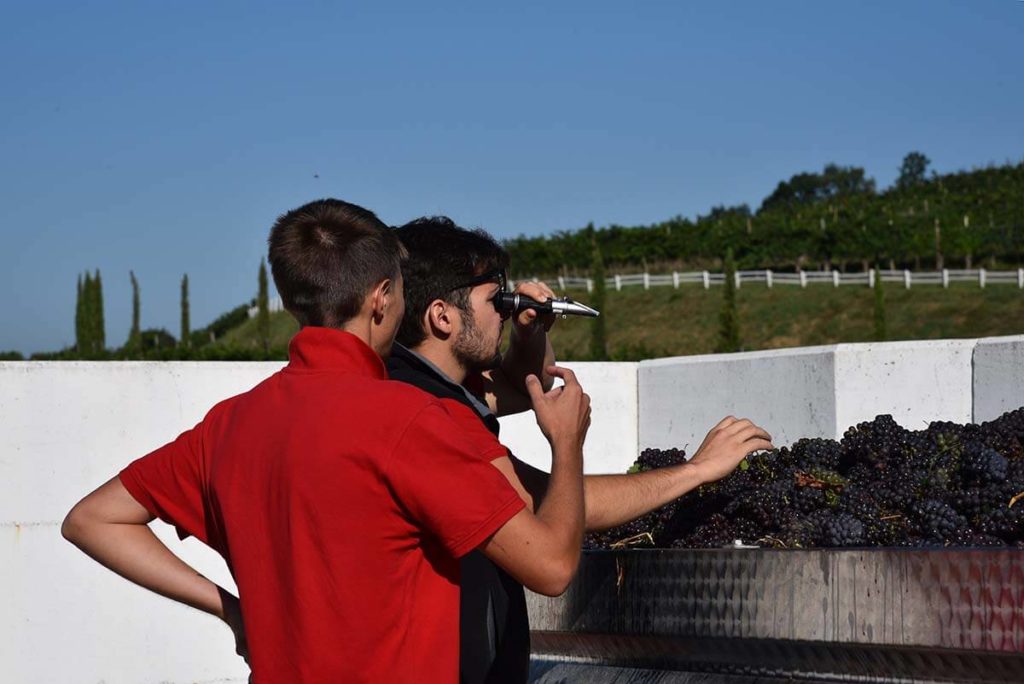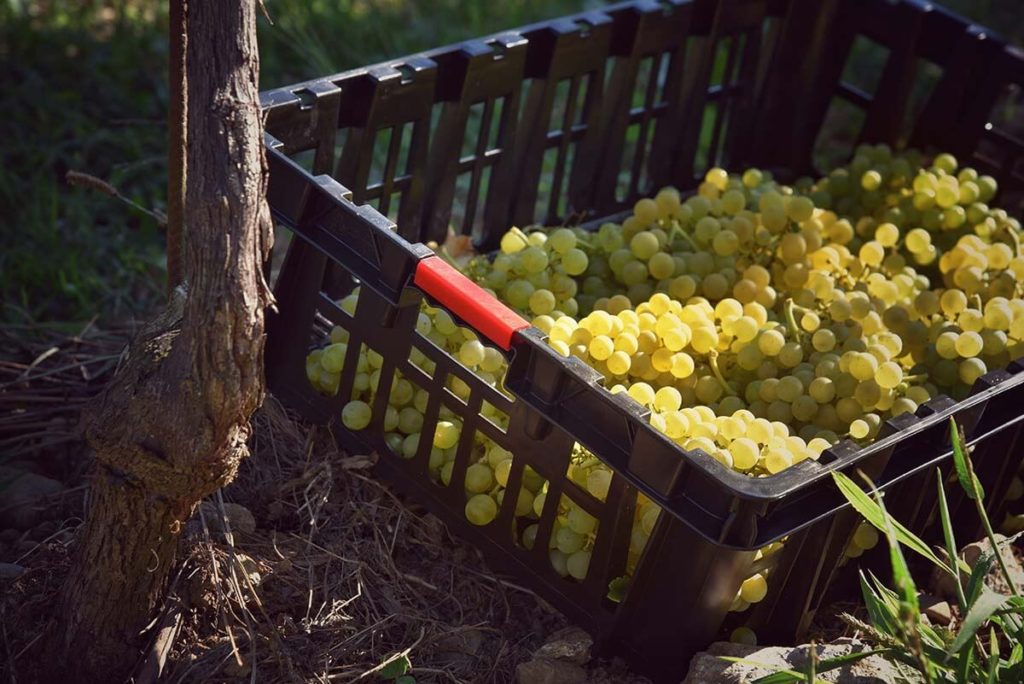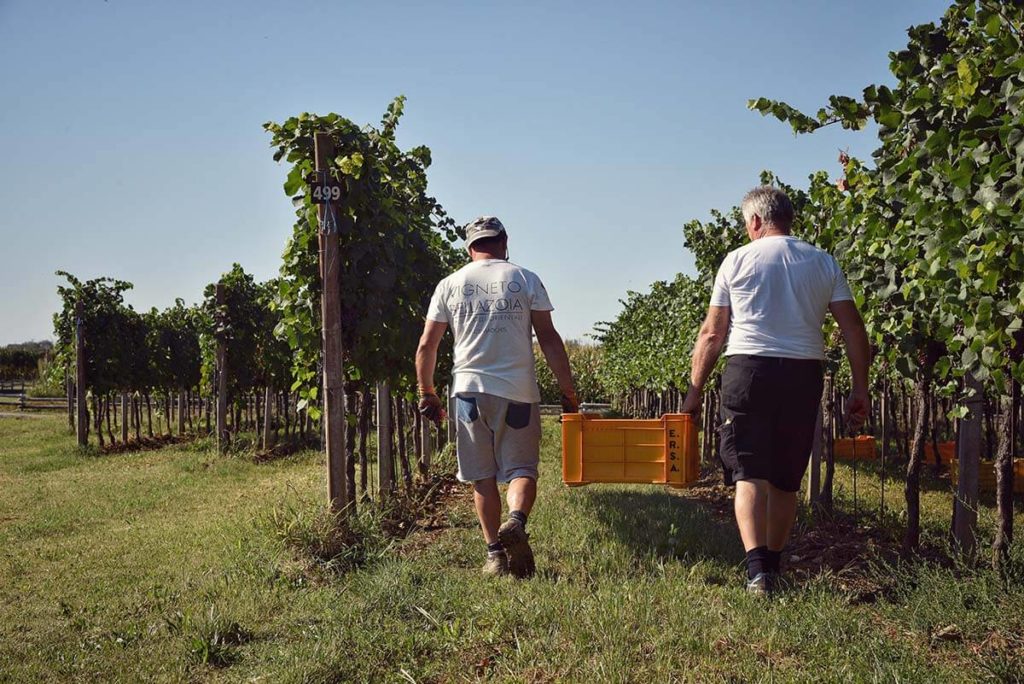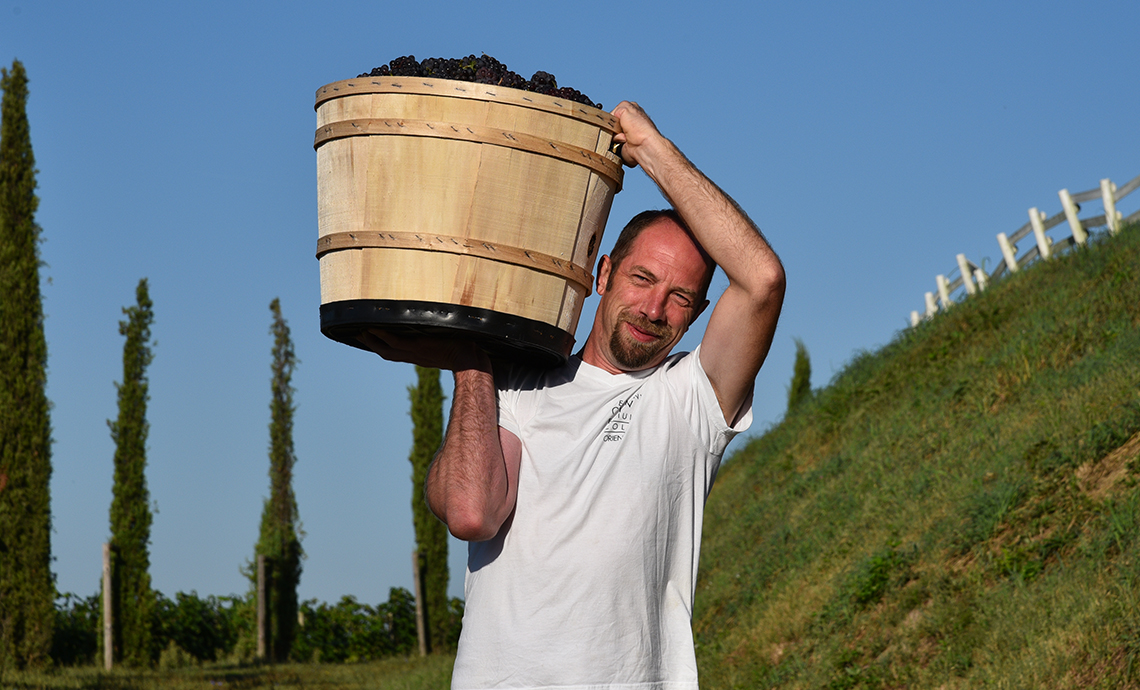When is the right time to harvest?
How do you know if the grapes are ripe and the right time to harvest has arrived?
There are, first of all, some factors to take into consideration:
- sugar level
- acidity
How to assess grape ripeness
Still unripe grapes contain many acids and few sugars. Over time, thanks to the light and heat of the sun, the ripeness of the fruit is achieved: sugars increase and acids decrease. The sugars are mostly glucose and fructose, the acids are mainly tartaric, malic and in small percentages citric acid.
In addition to the analysis of sugars and acids, sensory evaluations of the grapes are also carried out, especially for aromatic varieties (such as Sauvignon). For red grapes, on the other hand, the maturity of the tannins and the astringent sensations given by the latter are taken into consideration. The winegrower often relies on his experience to establish whether the time for harvest has come.

When fully ripe, each grape variety takes on a precise colour: Ribolla Gialla has golden berries, the Friulano has a yellow skin with green hints and is slightly speckled with brown, Sauvignon has green-yellowish berries, Refosco dal Peduncolo Rosso has an opaque black skin, while Schioppettino has lightish blue-black berries. In addition, each variety has a typical flavour that can be appreciated when full ripeness is achieved.
How to understand if the harvest period has come
To understand if harvest time has come, grape samples are collected from the various vineyards, once or twice a week, sometimes even more, after veraison (this is the phase in which the grapes gradually change colour from green to yellow or blue depending on the variety).
Analyses are carried out in specially equipped laboratories, using technologically advanced tools. When the percentage of sugars present in the berry is the same as the previous analysis, it means that there is no further sugar accumulation, and is a sign that harvesting can begin. This will be manual, especially in the hills, while special harvesting machines are used in the flatter areas.

In wineries where the technology is less advanced, some instruments such as the densimeter or refractometer are used to measure the level of sugars and acids.
Once the harvest day has been decided, the best time to harvest is early in the morning in the coolest hours. This avoids compromising the quality of the fruit: harvesting in the hot hours in fact brings with it the risk of unwanted fermentation.
There are wines such as sparkling wines which benefit from a little more acidity. For this reason, the harvest may take place even before the fruit is fully ripe. Nothing is lost at the aromatic level since these substances reach their maximum before the accumulation of sugar in the grape.

A curiosity! Grapes belong to two main categories:
- the European vine, from which Vitis vinifera descends, which in turn includes many varieties. Some are suitable for producing wine, others are for eating.
- the American vine, or the Vitis labrusca. This accumulates few sugars and the wine made from it has little alcohol, in quantities lower than the law requires. Vitis labrusca is particularly resistant to some parasites (for example Phylloxera). For this reason it has been used as a rootstock for European varieties for more than a century. If you look at a vineyard it is very likely that the roots and a small part of the trunk are American, while the remaining part: trunk, shoots, leaves and fruits certainly belong to varieties of Vitis vinifera, for example Ribolla Gialla, Friulano, Sauvignon, Refosco dal Peduncolo Rosso, Schioppettino …
None foundCould it be interesting for you:

